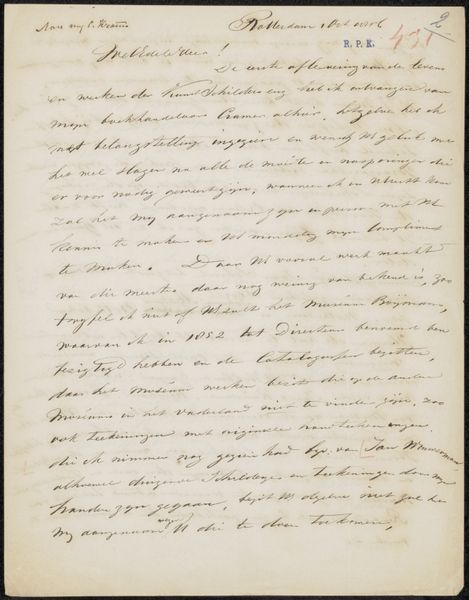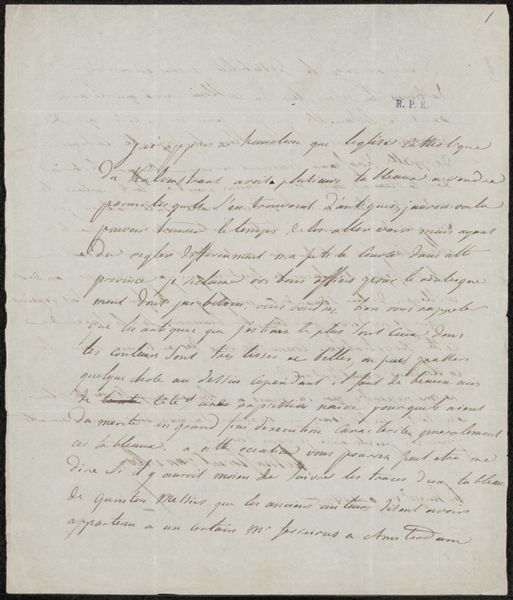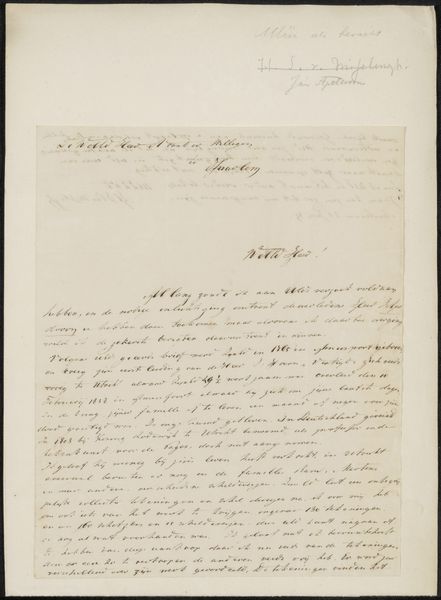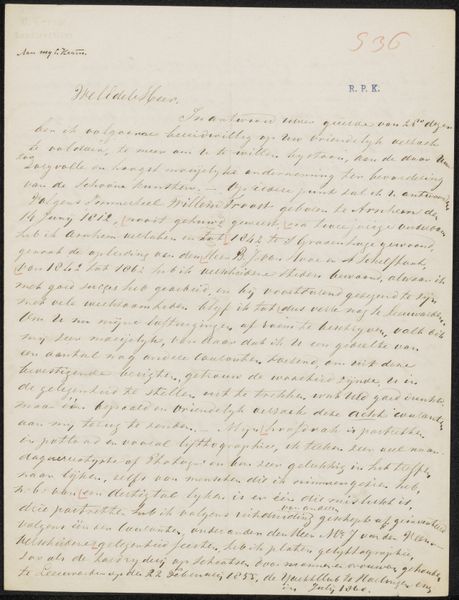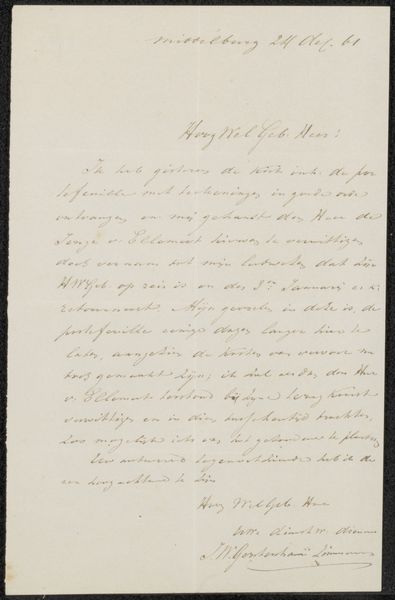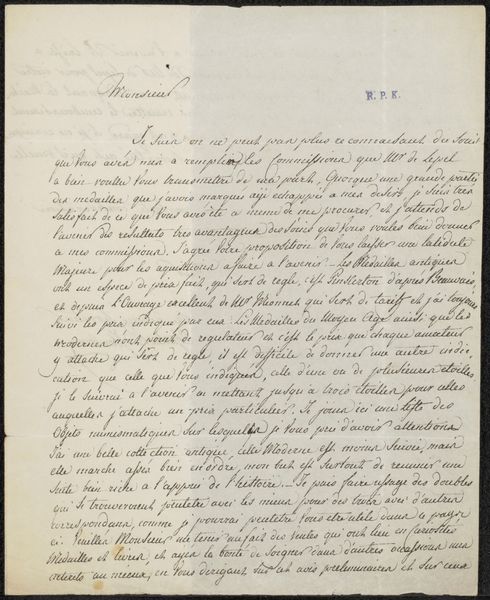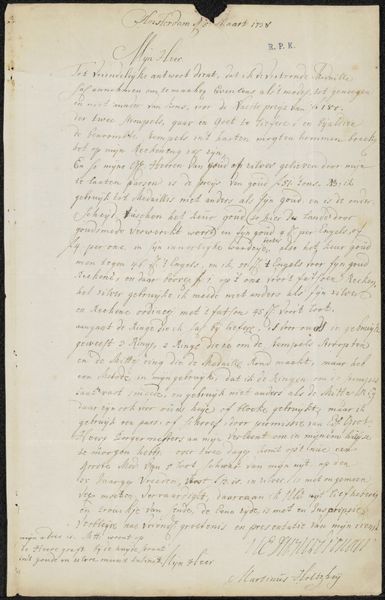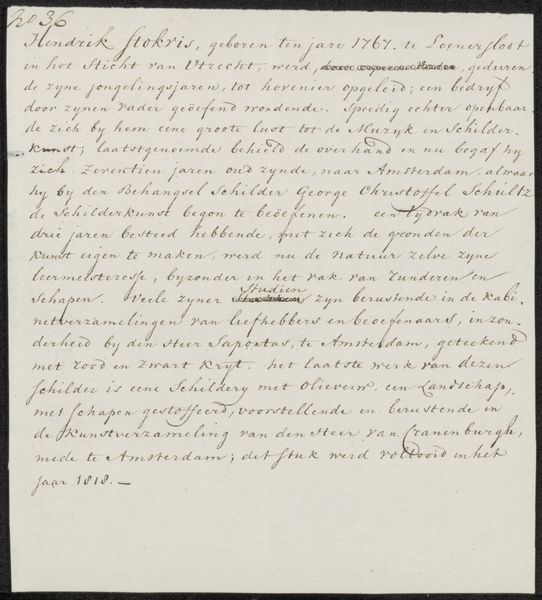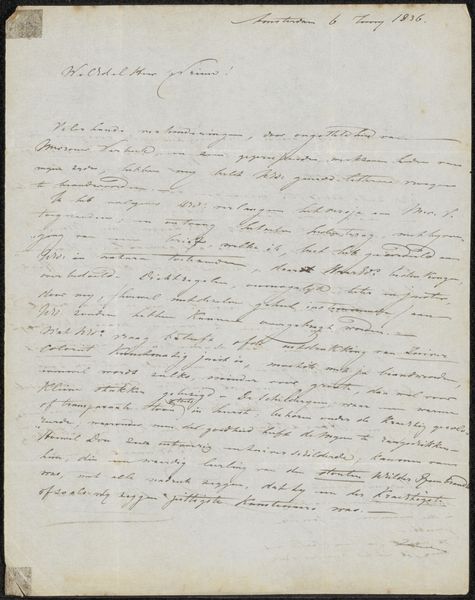
drawing, paper, ink, pen
#
drawing
#
ink paper printed
#
paper
#
ink
#
ink drawing experimentation
#
pen
Copyright: Rijks Museum: Open Domain
Editor: Here we have "Brief aan Christiaan Kramm," possibly from 1845, a drawing by Marinus Jacobus Stucki using ink on paper. My initial impression is that it's densely packed, almost claustrophobic. What strikes you about this piece? Curator: The dense and seemingly disorganized nature of the text presents an intriguing formal puzzle. Let us consider the calligraphic lines as form. Notice how they create patterns on the page. Is there a rhythmic quality despite the absence of distinct sections or visual breaks? What about the tonal variations in the ink itself? Does it contribute to depth, texture, or a sense of movement? Editor: I do see the patterns and the way the darkness of the ink contrasts with the paper. But it's difficult to engage with as art; it just looks like a letter. Are we meant to consider the content too, even though I can't read it? Curator: Not necessarily. Formalism seeks to extract meaning from the visual experience alone. We might analyze the letter’s composition irrespective of its linguistic meaning, viewing it primarily as a field of graphic marks, balanced and counterbalanced. How does this approach affect your experience? Editor: I suppose it makes me appreciate the craftsmanship, the way the artist controlled the pen to create such uniform lines. I hadn't thought of that before. It almost abstracts the personal element away, right? Curator: Precisely. It reframes our engagement, focusing attention on the aesthetic qualities of the artifact rather than its narrative function or cultural moment. The letter’s function transforms, from communication to an exploration of form itself. Editor: That's a very different way of approaching art! I’ll have to keep an open mind and really concentrate on *seeing*. Curator: Indeed, close seeing can open unexpected pathways into appreciating artwork from diverse periods and backgrounds.
Comments
No comments
Be the first to comment and join the conversation on the ultimate creative platform.

